Switching to a plant-based haircare routine can transform your locks and boost your eco-friendly lifestyle. More people are embracing natural, vegan products that nourish hair without harsh chemicals. These plant-powered formulas often contain vitamins and minerals that promote healthier, shinier hair while being gentler on the environment.
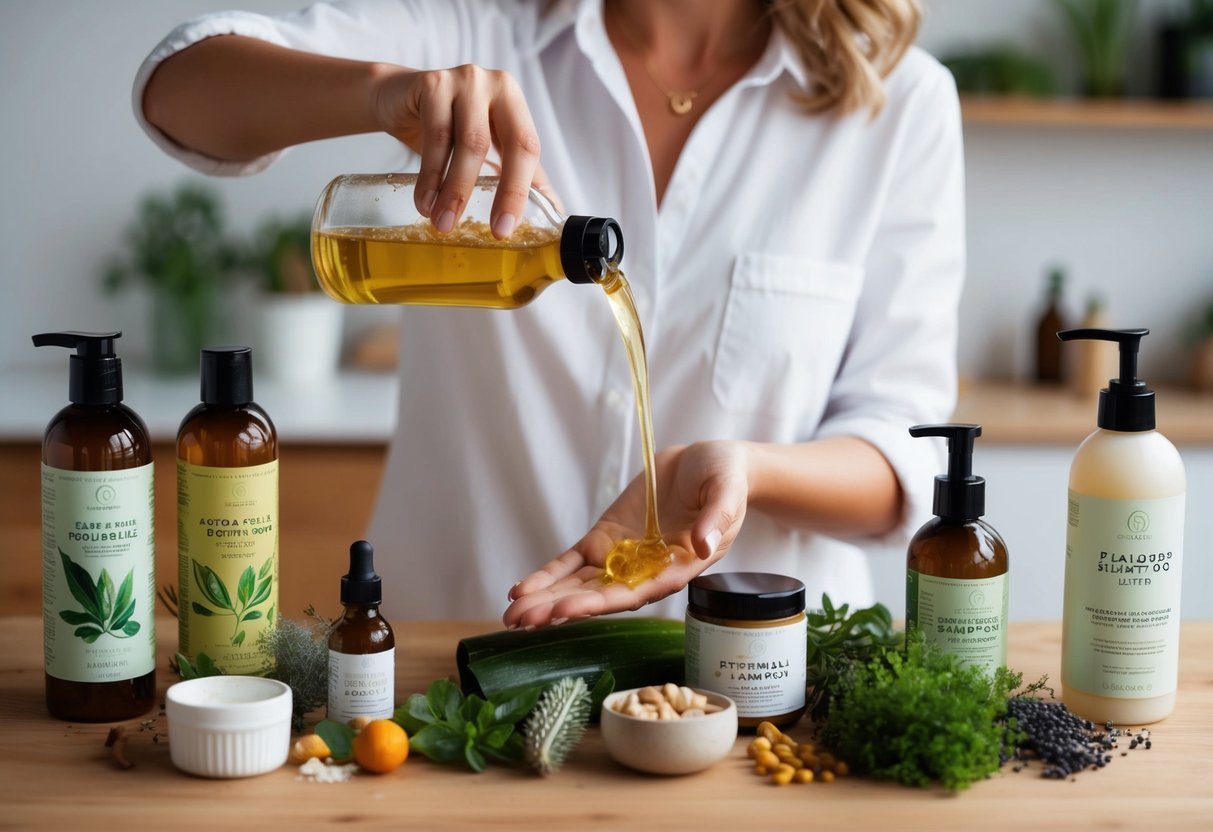
Ready to make the change? It’s easier than you might think. We’ll walk you through five simple steps to revamp your haircare regimen with nature’s goodness. From selecting the right shampoo to mastering DIY treatments, you’ll discover how to pamper your tresses with pure, organic ingredients that deliver amazing results.
1) Research Your Current Products
Let’s start by taking a closer look at what’s already in our hair care arsenal. We’ll want to check the labels on our shampoos, conditioners, and styling products.
Are there any ingredients we can’t pronounce? Those might be synthetic chemicals we’d rather avoid. We should also keep an eye out for common animal-derived ingredients like keratin or beeswax.
It’s helpful to use a clean beauty app or website to decode ingredient lists. This can give us insight into which products are truly plant-based and which ones aren’t quite there yet.
We might be surprised to find that some of our go-to products already fit the bill. Others may need swapping out for more natural alternatives. Either way, this research step sets us up for success as we move towards a greener hair care routine.
2) Look for Plant-Based Ingredients
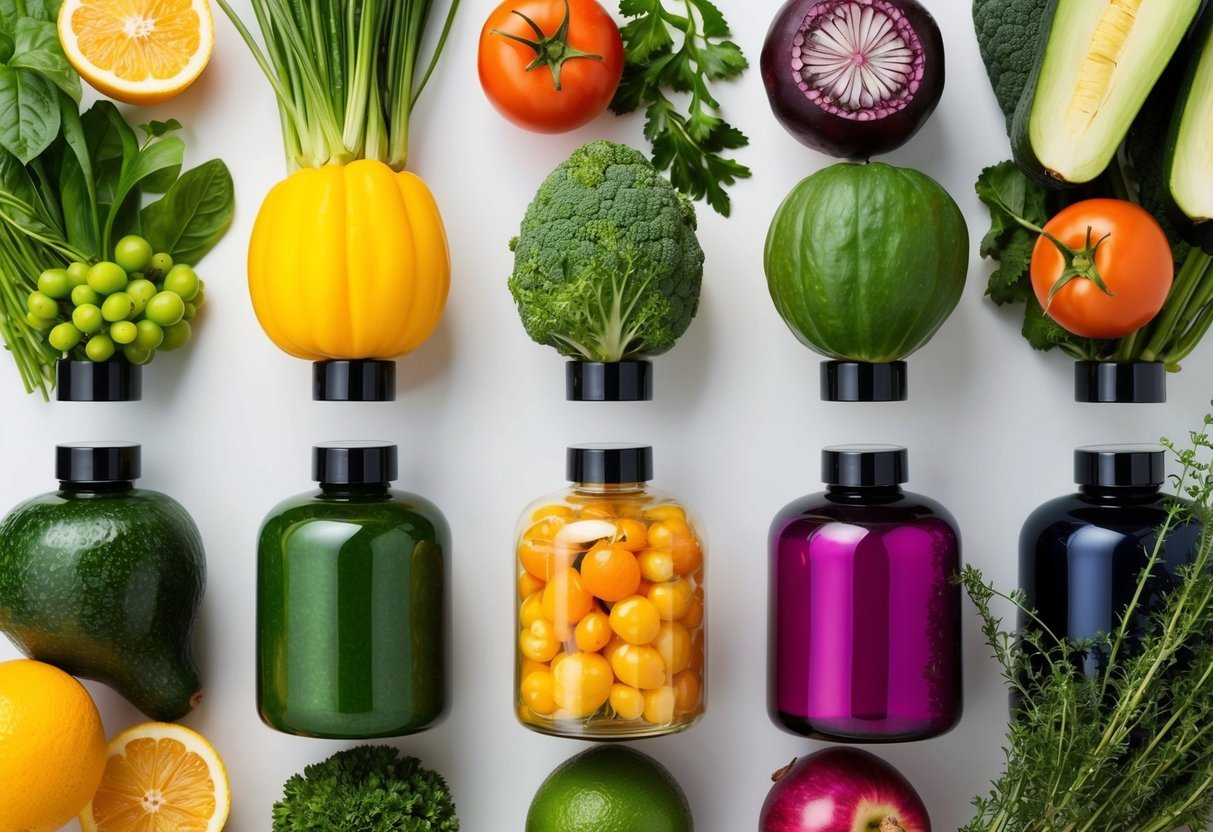
When switching to a plant-based haircare routine, we need to become ingredient detectives. Natural oils like coconut, argan, and jojoba are our new best friends. These nourish our locks without harsh chemicals.
We should keep an eye out for botanical extracts too. Aloe vera, chamomile, and rosemary can work wonders for our scalp and strands. Plant-based proteins like quinoa and soy help strengthen our hair.
Let’s not forget about essential oils. Lavender, peppermint, and tea tree offer natural fragrance and potential benefits. We can look for products that use these instead of synthetic perfumes.
Avoid ingredients we can’t pronounce. If it sounds like it belongs in a lab, it probably doesn’t belong on our hair. We’re aiming for pure, simple formulas here.
Remember, not all plant-based ingredients are created equal. Organic and sustainably sourced options are ideal. They’re better for our hair and the planet.
3) Gradually Replace Products
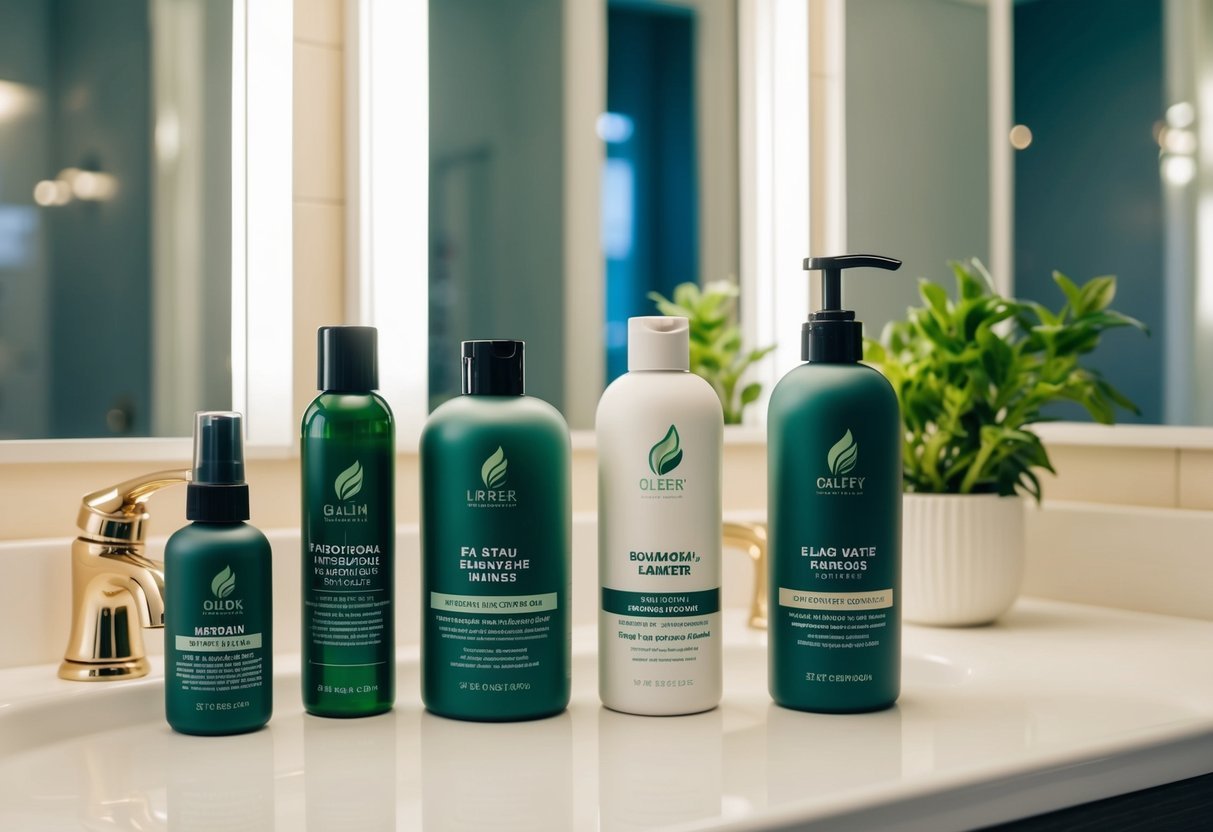
Transitioning to plant-based hair care doesn’t have to happen overnight. We recommend swapping out one product at a time to ease into your new routine.
Start with your shampoo. Look for a gentle, sulfate-free option packed with natural cleansers like coconut-derived surfactants. These will cleanse without stripping your hair’s natural oils.
Next, focus on conditioner. Seek out formulas rich in plant oils and butters. Ingredients like shea butter, argan oil, and avocado oil can deeply nourish and hydrate your locks.
For styling products, explore botanical-based alternatives. Aloe vera gel makes an excellent natural hair gel, while flaxseed can create a nourishing hold.
Don’t forget your treatment products. Try a DIY hair mask using mashed avocado and honey for deep conditioning. Or look for store-bought options featuring ingredients like coconut oil or jojoba oil.
Remember, it’s okay to take your time with this process. Your hair may need an adjustment period as you introduce new, gentler formulas. Be patient and listen to what your hair needs.
4) DIY Hair Masks and Rinses
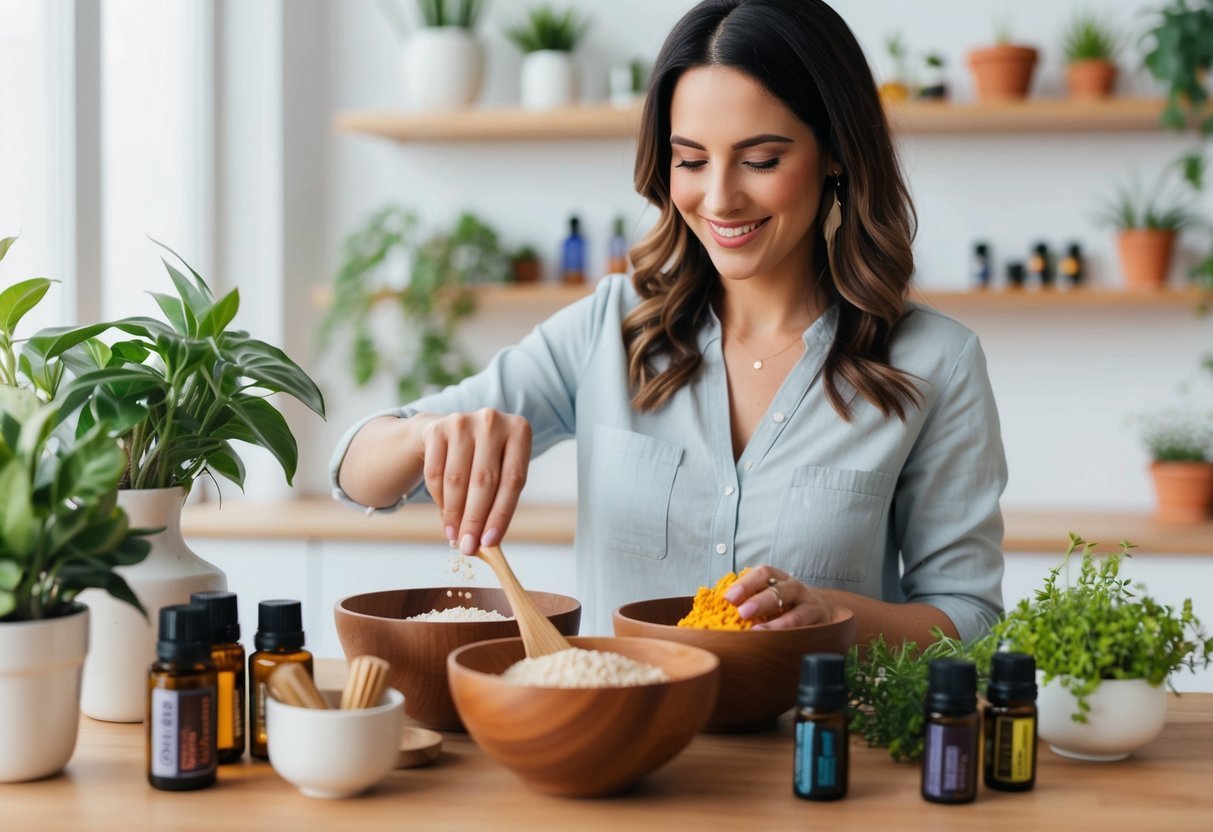
We love pampering our locks with natural, plant-based goodies straight from our kitchen. DIY hair masks and rinses are a fun way to nourish our tresses without harsh chemicals.
Whipping up a creamy avocado mask is like treating our hair to a smoothie. We mash a ripe avocado with coconut oil for deep hydration. It leaves our strands silky smooth and smelling tropical-fresh.
For a quick shine boost, we brew some chamomile tea and use it as a final rinse after shampooing. The gentle herbs add a subtle golden glow to lighter hair colors.
Apple cider vinegar makes an awesome clarifying rinse. We mix it with water to remove product buildup and restore our scalp’s pH balance. Our hair feels squeaky clean and full of bounce afterward.
Aloe vera gel is our go-to for soothing an itchy scalp. We massage it in and let it sit for 30 minutes before rinsing. It’s cooling and calming, perfect for sensitive skin.
These DIY treats are like spa days for our hair. We get to play mixologist with pure ingredients and skip the mystery additives. Our locks thank us with extra shine and vitality.
5) Be Patient with Results
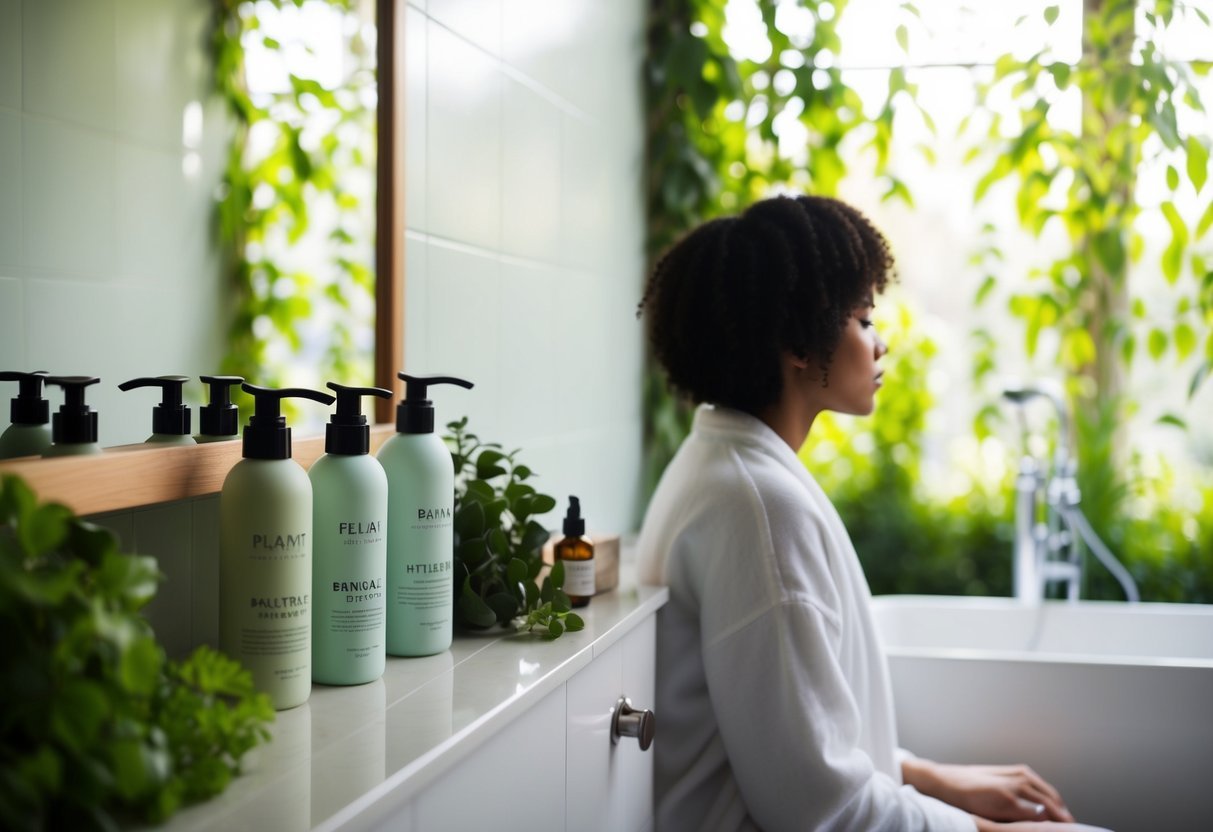
Switching to plant-based haircare is an exciting journey, but it’s important to remember that good things take time. Our hair and scalp need a chance to adjust to the new, gentler ingredients.
In the first few weeks, we might notice some changes. Our hair could feel different or even look a bit oily. This is totally normal! It’s just our locks getting used to the pure, organic goodness.
We recommend sticking with it for at least a month. This gives our hair enough time to truly benefit from the natural ingredients. It’s like giving our tresses a mini-makeover from the inside out.
Remember, everyone’s hair is unique. Some of us might see results quickly, while others need more time. The key is to stay consistent with our new routine and trust the process.
As we wait, let’s focus on the positives. We’re treating our hair to nourishing botanicals and steering clear of harsh chemicals. That’s a win in our book!
Understanding Plant-Based Haircare
Plant-based haircare offers a natural approach to nourishing our locks. It harnesses the power of botanical ingredients to cleanse, condition, and style hair without harsh chemicals.
What Is Plant-Based Haircare?
Plant-based haircare uses ingredients derived from plants instead of animal byproducts or synthetic chemicals. These products often contain herbs, fruits, nuts, and plant oils. We love how they’re free from sulfates, silicones, and artificial fragrances.
Common plant-based ingredients include:
- Coconut oil
- Aloe vera
- Jojoba oil
- Shea butter
Many brands now offer shampoos, conditioners, and styling products made entirely from plants. It’s exciting to see how nature can care for our tresses!
Benefits of Using Plant-Based Products
Switching to plant-based haircare can work wonders for our manes. These gentle formulas are often more nourishing and less likely to cause irritation.
Some key benefits include:
- Improved scalp health
- Reduced environmental impact
- Cruelty-free production
Plant-based products can make our hair shinier, stronger, and more manageable. They’re packed with vitamins and minerals that feed our locks naturally.
We’ve noticed our hair feels softer and looks healthier since making the switch. Plus, it’s nice knowing we’re using products that are kinder to animals and the planet.
Choosing the Right Products
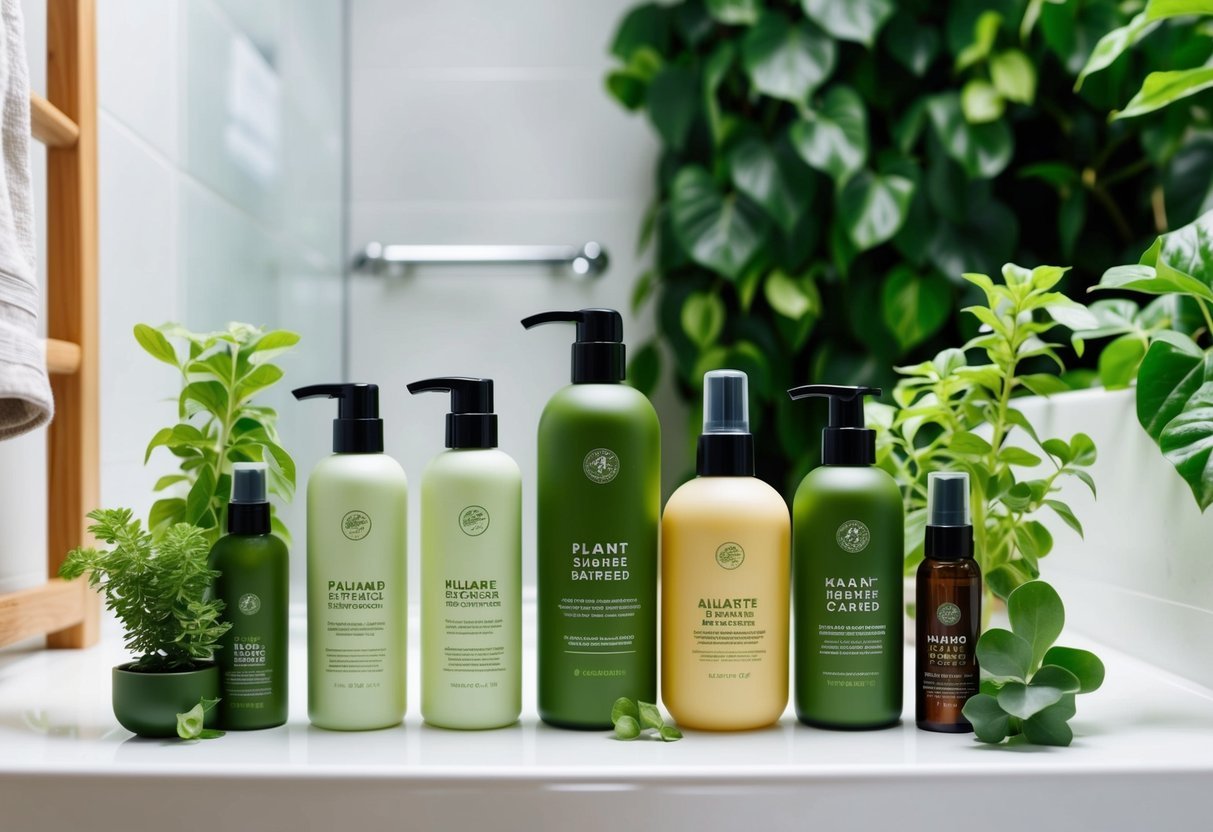
Selecting plant-based haircare products requires careful attention to ingredients and formulations. We’ll explore how to identify truly natural options and steer clear of harmful chemicals.
Identifying Plant-Based Ingredients
When shopping for vegan haircare, we look for products packed with nourishing botanical extracts. Aloe vera, coconut oil, and shea butter are star players in many natural formulas. We also love seeing ingredients like avocado oil, jojoba oil, and argan oil on labels – these powerhouses deliver intense moisture and shine. In addition to focusing on haircare, integrating a solid vegan makeup routine is essential for a complete beauty regimen. When selecting cosmetics, opt for brands that prioritize cruelty-free and eco-friendly practices while harnessing the benefits of plant-based ingredients. For those seeking vegan makeup routine tips, consider using products that not only enhance your look but also nourish your skin, such as tinted moisturizers infused with natural oils and mineral-based foundations.
Plant-based proteins like quinoa and rice are excellent for strengthening strands. Herbs such as rosemary and lavender not only smell divine but also promote scalp health. We’re big fans of fruit extracts too – papaya and mango enzymes can work wonders for clarifying and adding bounce.
Remember to check that these natural goodies are near the top of the ingredient list. This ensures they’re present in effective amounts.
Avoiding Harmful Chemicals
Steering clear of harsh chemicals is key in our plant-based haircare journey. We always skip products containing sulfates, which can strip hair of its natural oils. Parabens are another no-no – these preservatives have been linked to hormone disruption.
Silicones might make hair feel smooth initially, but they can build up over time and lead to dullness. We opt for water-soluble alternatives instead. Synthetic fragrances often hide a cocktail of undisclosed chemicals, so we prefer products scented with essential oils.
Other ingredients to watch out for include:
- Formaldehyde
- Mineral oil
- Phthalates
- Propylene glycol
By being savvy label readers, we can ensure our haircare routine stays pure and nurturing. Our locks will thank us for choosing gentle, Earth-friendly formulas!
Maintaining Your New Haircare Routine
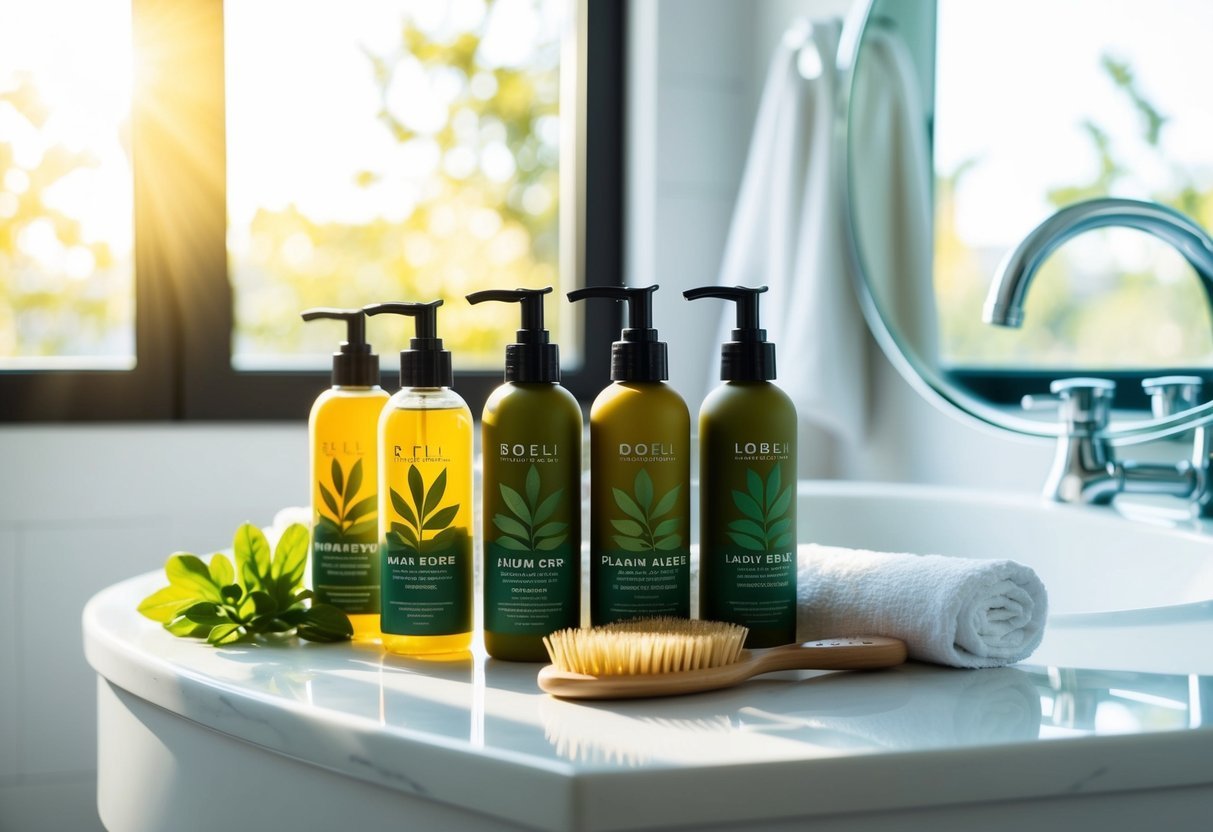
Keeping up with your plant-based haircare routine is key to seeing lasting results. Let’s explore how to adjust to new products and maintain healthy hair long-term.
Adjusting to New Products
Switching to natural haircare can take some getting used to. We may notice our hair feels different at first. This is normal! Our locks are detoxing from synthetic ingredients.
Give it time. It usually takes a few weeks for hair to adapt. Start by using new products every other wash, then gradually increase.
Pay attention to how your hair responds. Some days it might need extra moisture, others more protein. Listen to what your tresses are telling you.
Don’t be afraid to mix and match. Combine different plant-based products to find your perfect routine.
Tips for Long-Term Success
Consistency is crucial for maintaining healthy hair with natural products. Stick to your routine, even on busy days.
Regular scalp massages can boost circulation and distribute natural oils. Try using warm coconut or jojoba oil once a week.
Protect your hair while you sleep. Use a silk or satin pillowcase to reduce friction and breakage.
Trim your ends every 6-8 weeks to keep your hair looking fresh and prevent split ends.
Stay hydrated and eat a balanced diet. What we put in our bodies reflects in our hair’s health.
Remember, less is often more with natural products. Don’t overload your hair – a little goes a long way!
Frequently Asked Questions
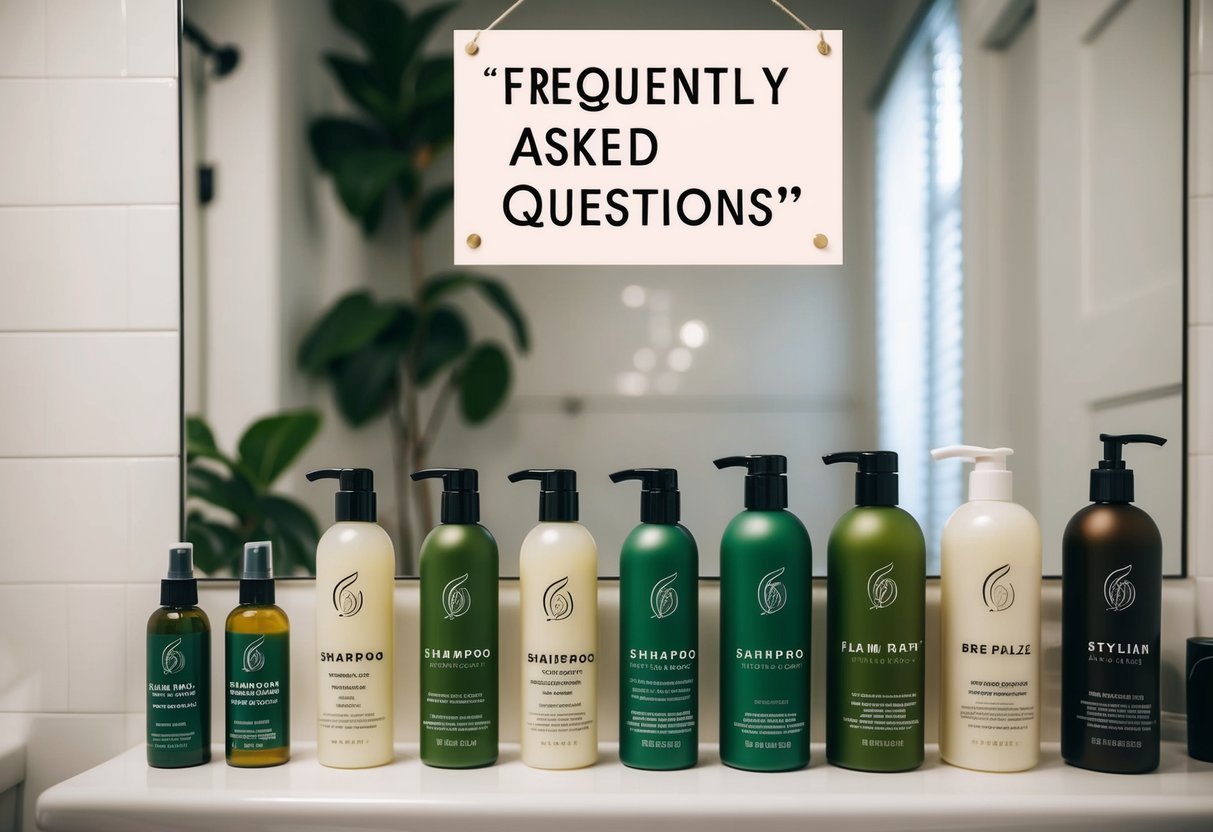
Switching to plant-based haircare brings up a lot of questions. We’ve rounded up some common ones to help you navigate this natural beauty transition.
What’s the deal with plant-based haircare anyway?
Plant-based haircare uses ingredients derived from nature instead of synthetic chemicals. It’s gentler on our hair and scalp, plus it’s better for the environment. Many people find their locks look healthier and feel stronger after making the switch.
How do I start swapping my regular hair products for plant-based ones?
Start by replacing one product at a time. Maybe begin with shampoo or conditioner.
Read labels carefully and look for natural ingredients you recognize. Gradually swap out other products as you finish them up.
What should I look for in a plant-based shampoo and conditioner?
Look for nourishing oils like coconut, argan, or jojoba. Aloe vera is great for hydration.
Avoid sulfates, parabens, and artificial fragrances. Natural cleansers like saponified oils can effectively clean without stripping hair.
Can plant-based haircare handle my frizzy mane?
Absolutely! Many plant-based products are excellent for taming frizz. Shea butter, avocado oil, and rice protein can work wonders.
You might also try a DIY flaxseed gel for extra hold and definition.
Do I need to switch up all of my hair products to see the benefits?
Not necessarily. Even changing just your shampoo and conditioner can make a difference.
As you run out of other products, consider plant-based alternatives. Every little swap counts!
How often should I be using plant-based treatments on my hair?
The frequency depends on your hair type and needs. Most people find that a weekly deep conditioning mask works well. For leave-in treatments, start with once or twice a week and adjust based on how your hair responds.

